Director Sean Baker and DP Drew Daniels on embracing the organic aesthetic of 16mm for ‘Red Rocket’
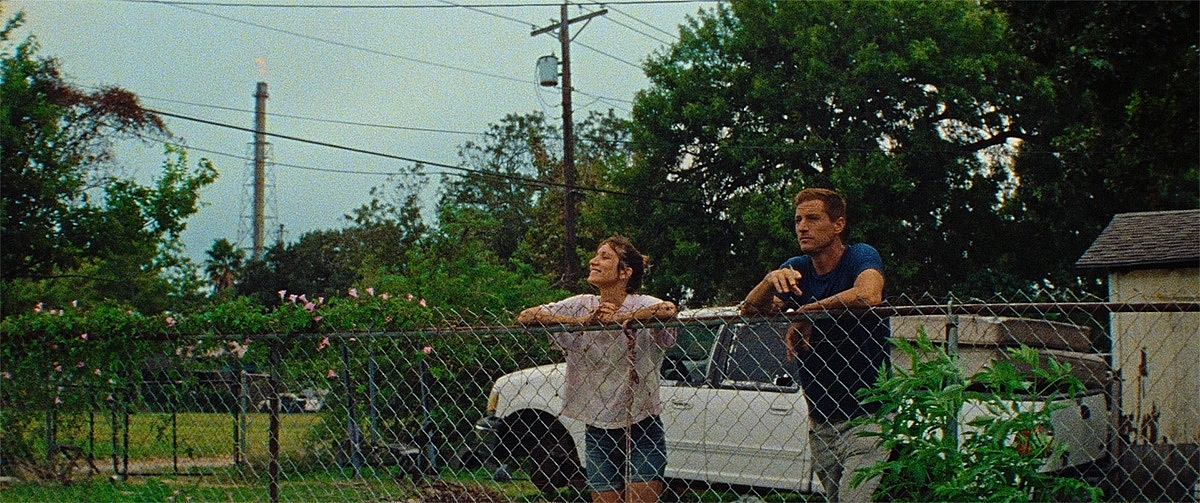
A scene from "Red Rocket." Courtesy of A24.
Sean Baker has made a career of telling stories about societal outliers, whether it be a transgender prostitute in Tangerine, an exotic dancer in The Florida Project or a former porn star in Red Rocket. Shifting between different mediums is also something Baker has become known for with Starlet shot on the Sony CineAlta PMW-F3, Tangerine on the iPhone 5S, and Red Rocket on the Arriflex 16SR3. “I embrace all mediums but if I can support what I consider to be the most aesthetically beautiful and the medium that created this art, I feel that it’s my duty to do that,” states Baker. “Always work with the resources that you have, but if you are in a place that you can afford film or talk your financiers or producers into making the investment, then do it because the results are always obvious and worth it.”
“I have never understood why filmmakers are going to cameras such as the ALEXA or RED and trying to emulate film,” observes Baker. “In my opinion if you’re going to use digital make sure its an aesthetic that you can’t achieve on film.”
“It’s a myth that film costs so much more than digital, especially 16mm which you can work just as fast as digital. There is also stuff that you’re not having to deal with such as the DIT and all of the hard drives because the lab will give you proxies. I’m in a place in my career right now and with the time that we’re living in, that I feel its necessary to champion film and Kodak.”
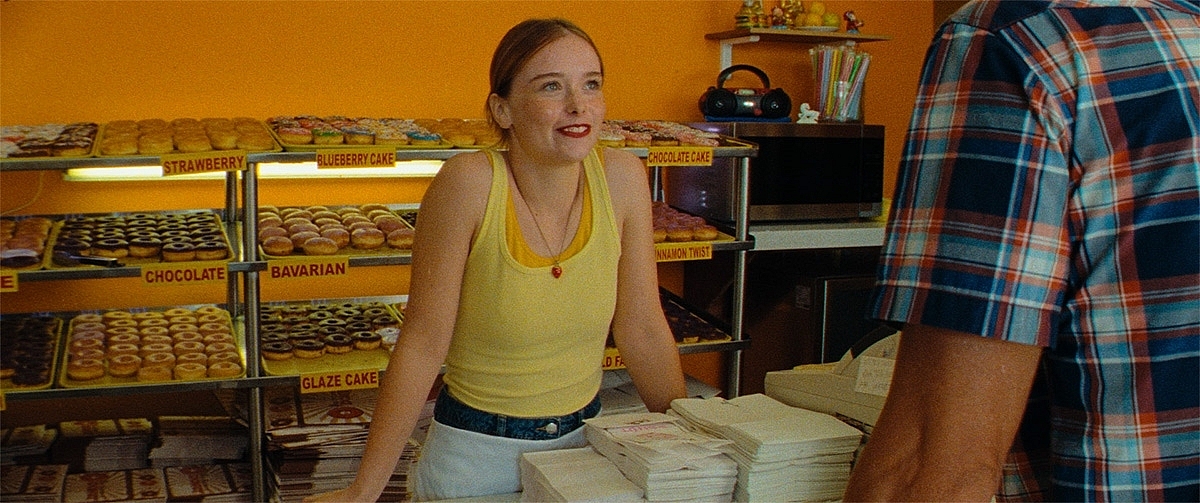
Unlike the rest of the film which emphasizes blues and reds, the shots with Strawberry (Suzanna Son) feature the full color palette. Image courtesy of A24.
“For this particular story, I was shooting landscapes, vistas and where nature meets industry. I wanted to capture that in an organic way. It is hard to articulate exactly what the difference is except with celluloid its not 1’s and 0’s, it’s the chemical process, it’s the silver nitrate, it’s organic.”
Baker adopted a controlled approach. “It had less to do with shooting on film and more to do with our budget and time. We only had 23 days, so I was shot listing more than I normally do and figuring out all of the coverage I needed for a particular scene before jumping into it. In the past I would be improvising it more behind the camera. There are a couple of key scenes that I call hosed down where we cover everything and then find it in the edit. We had dolly moves, calculated swish pans and locks. Drew Daniels [Waves] is an amazing camera operator on top of being a great cinematographer. He was doing these camera moves that I was absolutely loving and wanting more of. Drew is as fast with 16mm as most DPs are on digital; he would often be waiting on me.”
The camera and electrical departments were kept to a minimum. “We were small, mobile and flexible,” Drew Daniels said. “My entire crew was me, first AC Jesse Vielleux, second AC Adam Lichtenberger, and a gaffer/grip Chris Hill. There was even a time during testing where I was loading and downloading the film and setting up the tripod. When our crew showed up, our second AC ended up loading the whole time because we were moving quickly and shooting a lot of film. I ended up lugging the camera around, moving cases, and helping to set up lights. I found prep time to be more about getting aligned creatively with Sean and less actually being prepared for things. We didn’t want the camera to be moving all the time, so we tried to shoot mostly on sticks. It is a classic sensibility mixed with a raw indie exploitation 1970s film aesthetic.”
By combing visual opposites, they created a unique look. “We had the Hollywood grandeur with anamorphic and took it back with 16mm,” notes Daniels. “When you shoot on film you focus on the storytelling more clearly. You don’t get the extra shots that you think are cool. The editor knows what he needs. It was fun on set talking about editing because I want to consider what the edit will be and what shots are going to be used for certain parts of the edit. I don’t like to overshoot. We were always considering the juxtaposition of images.” Shooting on film was like returning to an old friend. “I learned how to shoot a film on film. Deep down if you have an opportunity to shoot it on film, it feels right. In the end it’s more fulfilling when you see it. I feel proud of the images that we created on film.”
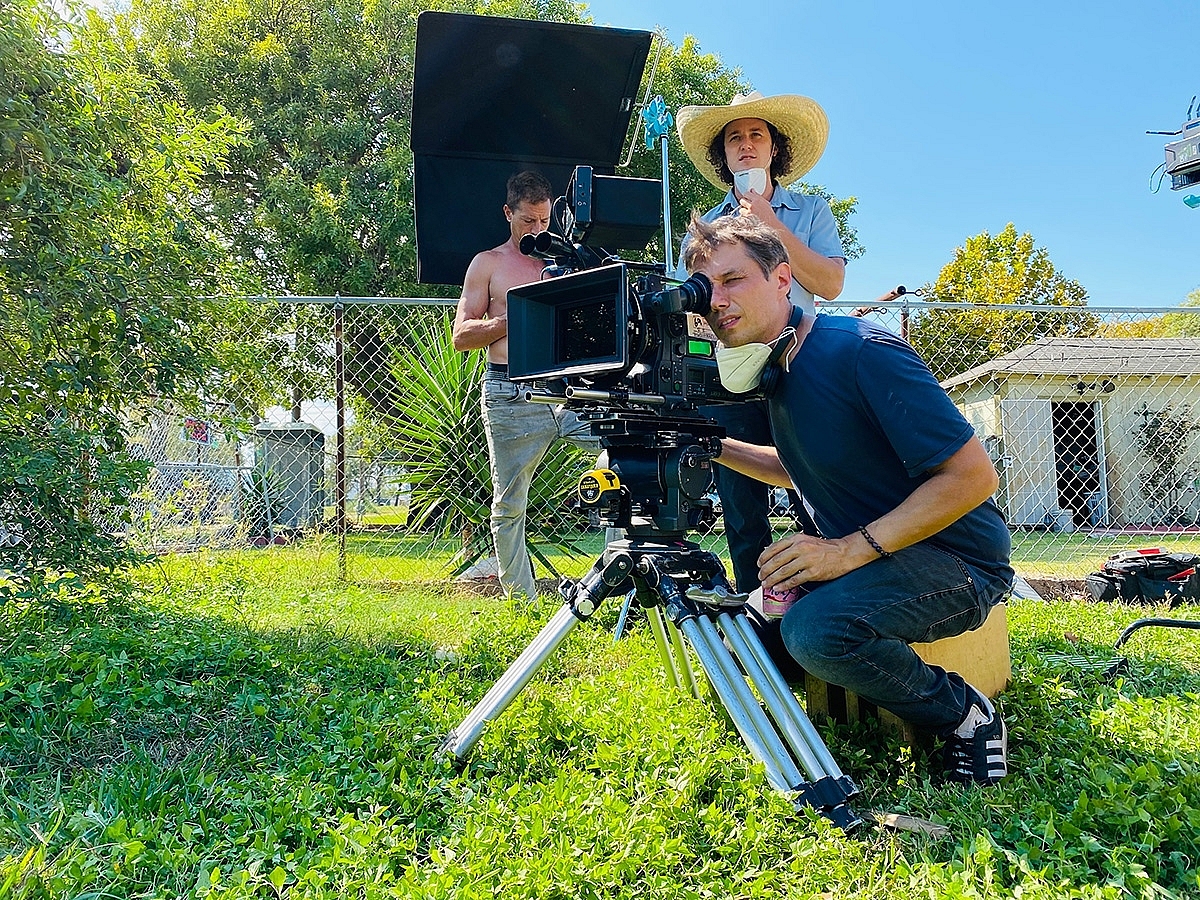
Sean Baker bought an Arriflex 16SR3 camera which was used to shoot the footage for Red Rocket. Courtesy of A24.
Baker bought a Arriflex 16SR3 camera which was paired with Panavision 1.44x Auto Panatars, which only come in 16mm and 50mm. Everything was shot with tripod and slider. “Part of why we shot on 16mm was literally the classic reasoning of not having enough money for 35mm,” explains Daniels. “The way to expand on the 16mm to make it more cinematic was to go anamorphic. Sean’s style lends itself to anamorphic; he likes to use every single part of the frame and is particular about every little detail in the background and production design.” The natural aspect ratio for 16mm is 1.66:1. “These Panavision lenses were 1.44x so when the image is de-squeeze you get a perfect 2:39 widescreen. We also had a Canon Super 16 zoom and tried to use it only for zoom shots.”
“Sean bought an anamorphic lens adaptor on eBay from Russia,” reveals Daniels. “There are a few shots in the movie that we did use it because the wide lens was too wide, and the tight lens was too tight. We would throw a 35mm or 25mm onto this crazy adapter and you literally had to set the rear element to infinity, and that’s where you set your f-stop, and you focus off of the front element. We had to remark it all because it was in metres. If the back element was off at all it would throw the front element off. I usually ended up hand focusing by eye with that lens.” A certain visual aesthetic was purposely avoided. “We didn’t want to make film that was like poverty porn. We had a still composed frame, and for interiors I shot at f/2.8 and f/4.5 for exteriors. I wanted to get the sharpest image out of the glass as possible and would overexpose a little bit. I was trying to feed the negative a healthy amount of light so we could get these dense blacks and rich colors.”
The entire lighting package consisted of Digital Sputniks DS3 and DS1, and a Joker 800 HMI. “We shot on 50D, 250D and 500T but I actually ended up leaning more towards the 500T for interiors and dusk,” explains Daniels. “I liked the way the tungsten film stock treated florescent lights and fixtures and practical lights; they seemed to burnout and react differently, especially in the highlights. The orange and green halation and all of the nuances that you get in the natural colors, we would try to find locations that had many fluorescents, sodium and mercury vapors, funky and weird LEDs, lights that might be flickering and TV screens. We tried to embrace all of that stuff and see how the film stock would treat it. We were always pleasantly surprised.”
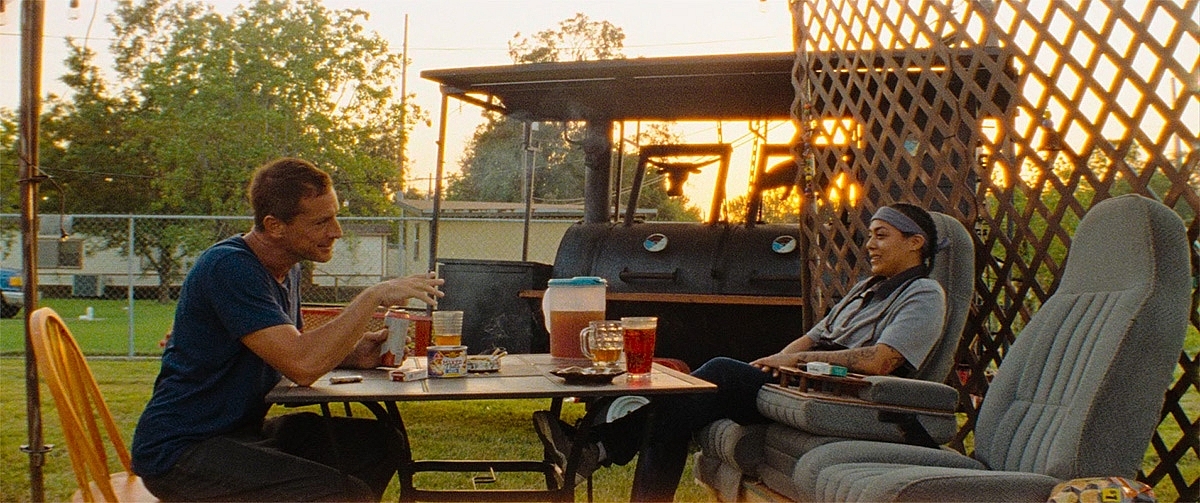
A scene from "Red Rocket." Courtesy of A24.
Baker explained that location scouts and casting sometimes happened simultaneously. “When we were finding our locations, we were also keeping our eyes open for locals who made an impression on us. In the case of Lonnie, who is played by Ethan Darbone, we were location scouting the restaurant that we shot the interviews in at the beginning of the film, and he happened to be the chef. We got a 2 for 1!” Casting a critical role like Mickey Saber was more difficult. “Mickey is an archetype in the adult film known as a ‘suitcase pimp’. They have to win people over so they are charming, appealing and quite funny but are also incredibly narcissistic, ignorant and unaware of the negative affects that they have had on the lives of others. They see themselves as victims and have an unrealistic blind optimism about their future. I found this psyche to be interesting. Simon Rex is charming and has comedic improv and dramatic delivery skills, so I knew that he understood his character.”
One of the craziest and funniest moments is when Mickey Saber escapes through a bedroom window and runs through the streets naked; not being able to get the necessary shooting permit, it had to be shot guerrilla style. “It was fun and scary,” admits Baker. “When we’re shooting the wide shot where he turns the corner and is running at the camera, the entire night lit up with blue and red. We had four squad cars surround us. I said, ‘Officers we’re the independent film crew that reached out to you about shooting.’ They laughed and went, ‘Do whatever you want.’ Then we realized at that moment is all they cared about was terrorism around the refinery.”
A pivotal narrative incident had the director sitting behind the wheel to do some stunt driving. “Drew and I were watching films that might have a similar tone or might inspire the look. He brought The Sugarland Express to the table, which I hadn’t seen in over 30 years. The aesthetic spoke to me, so we started doing nods to that film; one of them is the parallel driving shot. I didn’t want to tow the car because I’m always trying to ground my films in reality. We didn’t have a stunt team and I wasn’t going to give anybody that responsibility, so I took it upon myself and had to direct the scene after the fact. We parked in a parking lot, I listen back to the delivery, watched the monitor and playback, and would be like, ‘Okay. We got it.’”
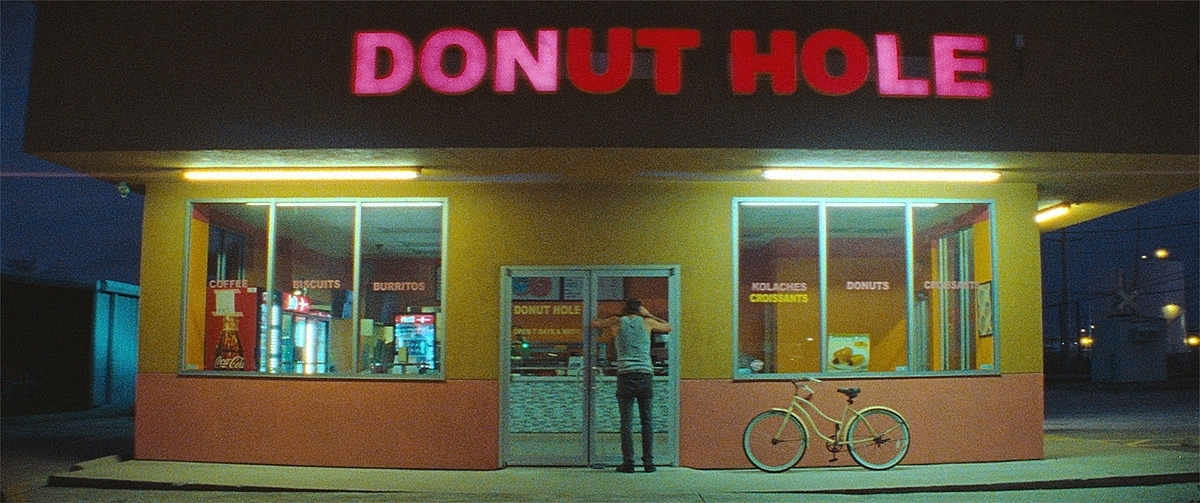
A scene from "Red Rocket." Courtesy of A24.
Reds and blues were a prominent part of the color palette with the exception of the world occupied by a particular character reveals Baker. “Because you could argue whether Strawberry [Suzanna Son] is real or not, where she works and lives, the colors cover the full spectrum.” The dailies were processed by FotoKem in Los Angeles with Daniels doing color passes on an iPad. “We created a show LUT much like you would do with digital,” remarks Daniels. “I was drawing upon Alex Webb photography as well as the cinematography of Robby Müller NSC, BVK [Dancer in the Dark] and Vilmos Zsigmond ASC [Close Encounters of the Third Kind]. I went straight to heroes for the look of the film.” Daniels was able to capture something he always strives for as a cinematographer. “I like things to feel handmade. I like imperfections. I like to feel the heart and soul behind the image. In Sean’s work you definitely feel his authorship and to an extent with Red Rocket that it ends up feeling like a fable.”
Amongst the tight schedule and limited budget, happy accidents did occur. “I wanted Mickey to be doing this semi-proposal to Strawberry while the train was going by so he could barely be heard plus I was doing a wink to big Spielbergian type of scene,” recalls Baker. “We found out 20 minutes beforehand when the train was coming. We had to nail everything from the camera move, racking of the focus, and the actors landing on their marks. Then in the moment when it all started coming together, the conductor blew the horn and it covered up Simon’s line that causes Suzanna to ask, ‘Are you proposing to me?’ It was like a gift from the film gods! There are lots of those. Every day we would have a problem followed by a miracle. When you have all these limitations imposed upon you, you have to embrace what that does and not fight it.”